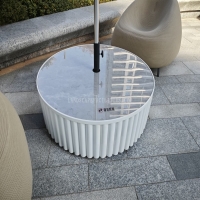Welcome to the website for landscape facilities products and knowledge.
How does the table’s design ensure compatibility with different seating heights?
Modern table design represents a sophisticated fusion of engineering precision and ergonomic science, specifically engineered to accommodate diverse seating heights. The fundamental principle lies in adjustable mechanisms integrated within table legs and frames, allowing users to modify the surface height according to their specific requirements. This adaptability is particularly crucial in multi-purpose environments where chairs, stools, and standing positions might be utilized interchangeably.
Manufacturers employ various innovative approaches to achieve this compatibility. Hydraulic and pneumatic lift systems enable smooth vertical adjustments, while manual crank mechanisms offer reliable alternatives for budget-conscious consumers. The industry standard typically accommodates a range between 22 to 30 inches, covering everything from standard dining chairs to bar-height stools and specialized seating solutions.
Beyond mechanical adjustments, designers incorporate intelligent proportional relationships between table thickness and leg structure. Thinner table surfaces combined with strategically positioned support beams create visual lightness while maintaining structural integrity across different height settings. The inclusion of telescopic legs with multiple locking positions further enhances this flexibility, allowing micro-adjustments that traditional fixed-leg tables cannot provide.
Material selection plays an equally important role in height compatibility. Lightweight yet durable materials like aluminum composites and engineered wood facilitate easier adjustment while ensuring stability at any configured height. Advanced models even feature memory presets that recall preferred height configurations for different users or activities, transitioning seamlessly between dining, working, and recreational purposes.
The science behind this compatibility extends to precise calculations of knee clearance and legroom. Designers maintain a minimum of 24 inches vertical clearance and 18 inches horizontal depth to accommodate various seated positions comfortably. This attention to spatial dynamics ensures that users experience consistent comfort regardless of whether they're using standard office chairs, lower lounge seating, or higher bar stools.
Furthermore, contemporary designs incorporate universal design principles, making tables accessible for users with mobility challenges or specific physical requirements. This inclusive approach demonstrates how table height compatibility transcends mere convenience, becoming an essential component of accessible and adaptive living spaces that serve diverse user needs without compromising aesthetic appeal or functional requirements.
Related search:

Recommendation
Round metal tube border design table with tempered glass or granite countertop on the top.